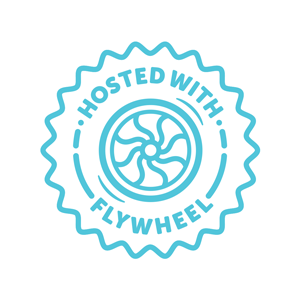SEO-Optimized Web Content: 9 Essential Tips for Success
SEO-optimized web content is the cornerstone of online success. It helps your business stand out in search results and connect with customers. So, what is SEO-optimized web content? In simple terms, it’s content designed to help search engines like Google understand and rank your webpages, which improves your visibility online. Here’s a quick rundown:
- Keywords: Using the right words that people are searching for.
- Content Quality: Creating useful, accurate, and engaging content.
- User Engagement: Encouraging interactions through comments, shares, and longer viewing times.
Understanding these basics is crucial because, as Google’s Gary Illyes says, “MAKE THAT DAMN SITE CRAWLABLE.” This focus ensures your website is easily found and prioritized by search engines.
I’m Randy Speckman, founder and CEO of Randy Speckman Design, specializing in creating effective, custom web solutions. Our strategic efforts in SEO-optimized web content have helped countless businesses improve their digital presence. Up next, we’ll dive deeper into what makes content truly optimized for search engines.

SEO-optimized web content word roundup:
– SEO content writing services
– effective SEO tactics
What is SEO-Optimized Web Content?
SEO-optimized web content is crafted to make your website more visible to search engines like Google, ensuring that it appears higher in search results. The goal? To attract more visitors and turn them into customers.
Content Optimization
Content optimization involves fine-tuning your content so that search engines can easily understand and rank it. This means creating content that is relevant, engaging, and valuable to your audience. It’s about striking the right balance between what your audience wants to read and what search engines need to see.
In the past, content optimization was all about keyword stuffing—cramming as many keywords as possible into your text to trick search engines. But today, search engines are smarter. They focus on the quality and relevance of your content. Google, for instance, values authenticity, trustworthiness, and the human expertise behind your content.
Search Engine Visibility
To boost your search engine visibility, your content must be easily findable. This includes using strategic keywords and ensuring your website is technically sound. A well-organized site structure, fast loading times, and mobile-friendliness all contribute to better visibility.
Gary Illyes from Google highlights the importance of making your site “crawlable.” This means structuring your website so that search engines can easily steer and index your pages.
Keyword Integration
Keywords are the bridge between your content and what users are searching for. Effective keyword integration involves placing these words naturally throughout your content—think titles, headers, and the first 100 words of your text. But remember, quality trumps quantity. Overusing keywords can make your content sound robotic and turn off readers.
Instead, focus on long-tail keywords, which are more specific phrases that users might search for. These often have less competition and can attract more targeted traffic to your site.
SEO-optimized web content is about creating valuable content that resonates with your audience while meeting the technical requirements of search engines. This dual focus helps improve your online presence and ultimately drives business success.

Next, we’ll explore how to create this type of content effectively, ensuring it captivates both search engines and your audience.
How to Create SEO-Optimized Web Content
Creating SEO-optimized web content involves several key steps. Let’s break it down into manageable parts: keyword research, content structure, multimedia use, and readability.
Keyword Research
Before you start writing, you need to know what your audience is searching for. This is where keyword research comes in. Tools like Google’s Keyword Planner or Semrush can help you find the right keywords to target.
Look for long-tail keywords—these are phrases with three or more words. They are specific and often less competitive, which means they can bring more targeted traffic to your site. For example, instead of targeting “web design,” you might focus on “custom web design services in Kennewick WA.”
Content Structure
A well-structured article is like a well-organized closet—it makes everything easier to find. Use headings and subheadings to break your content into sections. This not only helps readers but also search engines understand your content better.
- Headings (H1, H2, H3): Use your main keyword in the H1 tag, and use related terms in H2 and H3 tags.
- Bullet Points and Lists: These make information easy to digest and help highlight important points.
A study by Semrush found that 47% of top-performing articles use advanced headings like H2 and H3. This shows the importance of a clear structure.
Multimedia Use
Adding visuals can significantly boost engagement. Articles with seven or more images receive 116% more organic traffic than those without. Consider including:
- Images: Use relevant images with descriptive alt text to improve accessibility and SEO.
- Videos: These can improve user engagement. Articles with at least one video get 83% more traffic.
- Infographics: These are great for explaining complex information in a simple way.

Readability
Your content should be easy to read. Use simple language and short sentences. Avoid jargon unless necessary, and always explain it if you do use it. Here are a few tips:
- Short Paragraphs: Keep them under 90 words to maintain reader interest.
- Vary Sentence Length: Mixing short and long sentences keeps the text engaging.
- Consistent Tone: Maintain a tone that matches your brand’s voice.
You’re writing for humans, not robots. Make your content enjoyable to read while still meeting SEO criteria.
By focusing on these elements, you can create SEO-optimized web content that not only ranks well but also provides real value to your audience. Up next, we’ll dive into essential tips to further improve your content’s SEO performance.
9 Essential Tips for SEO-Optimized Web Content
Creating SEO-optimized web content isn’t just about sprinkling in keywords and hoping for the best. It’s about crafting content that search engines love and users find valuable. Here are nine essential tips to get you started:
1. Content Quality
Quality content is the foundation of SEO success. It should be informative, engaging, and meet the needs of your audience. Follow the E-E-A-T principle: Expertise, Experience, Authoritativeness, and Trustworthiness. This ensures your content is valuable and credible.
2. Regular Updates
Fresh content is favored by search engines. Regularly updating your site signals that your information is current, which can boost your rankings. A study found that 65% of successful content marketers perform content audits twice a year. Consider revisiting old articles to add new insights or data.
3. Headings
Use headings to organize your content. Not only do they improve readability, but they also help search engines understand your page structure. Use H1 for your main title and H2 or H3 for subheadings. This hierarchy makes your content easier to steer.
4. Meta Descriptions
Meta descriptions are the snippets that appear under your page title in search results. They should be concise, around 150-160 characters, and include your main keyword. Well-crafted meta descriptions can improve click-through rates.
5. Alt Text
Alt text describes images for search engines and users with screen readers. It’s crucial for accessibility and SEO. Use descriptive language and include keywords where appropriate. For instance, “custom web design in Kennewick WA” could be an effective alt text for an image showcasing your work.
6. Internal Linking
Internal links connect your pages, helping users steer and search engines understand your site’s structure. Link to related content within your articles to keep users engaged and improve your site’s SEO.
7. User Experience
A positive user experience (UX) is vital. Ensure your site is mobile-friendly, loads quickly, and is easy to steer. Google’s Core Web Vitals emphasize page speed and UX, so don’t overlook these elements.
8. Social Media
Social media can amplify your content’s reach. Share your articles on platforms where your audience is active. Engaging with users and fostering a community can increase your content’s visibility and authority.
9. Clean Code
Search engines prefer clean, organized code. Avoid broken links and ensure your site is secure. Clean code helps search engines crawl your site more efficiently, improving your SEO performance.
By focusing on these tips, you can improve your SEO-optimized web content and improve your site’s visibility. Up next, we’ll tackle some frequently asked questions to deepen your understanding of SEO content strategies.
Frequently Asked Questions about SEO-Optimized Web Content
How do I know if my content is SEO optimized?
To determine if your content is SEO optimized, start by checking some key elements:
-
Title Tags: These are the titles that appear in search engine results. Make sure they include your main keyword and accurately reflect the content of the page. They should be clear and enticing to encourage clicks.
-
Meta Descriptions: These brief summaries appear under the title tag in search results. They should be around 150-160 characters and include relevant keywords. A compelling meta description can significantly improve your click-through rate.
-
H1 Tags: This is the main heading of your page. It’s crucial for signaling to search engines what your page is about. Use it to include your primary keyword and ensure it aligns with the content’s main topic.
What is the role of keywords in SEO content?
Keywords are the backbone of SEO content. They help search engines understand what your content is about and match it with relevant search queries.
-
Keyword Prominence: Place keywords in prominent positions like the beginning of titles and headings. This signals their importance to search engines.
-
Long Tail Keywords: These are longer, more specific keyword phrases. They often have less competition and can attract more targeted traffic. For example, “affordable web design services in Kennewick WA” is a long tail keyword.
How can I improve my search engine ranking?
Improving your search engine ranking involves a combination of strategies:
-
On-Page SEO: This includes optimizing title tags, meta descriptions, headers, and content. Ensure your keywords are naturally integrated and that your content is valuable and relevant.
-
Mobile-Friendly Design: With more users accessing content from mobile devices, having a mobile-friendly site is crucial. Google prioritizes mobile-friendly sites in search results, so make sure your site is responsive and easy to steer on all devices.
By focusing on these elements, you can improve your SEO-optimized web content and climb the search engine rankings.
Conclusion
At Randy Speckman Design, we understand that a well-designed website is just the beginning. Our true expertise lies in creating websites that not only look great but also perform exceptionally well in search engines. Through our digital strategy, we ensure that your website attracts and engages your target audience effectively.
Our approach to web design is rooted in conversion optimization. We focus on turning your site visitors into loyal customers. This involves a deep understanding of user behavior and implementing strategies that guide users smoothly through their journey, from landing on your site to taking action.
With our web design expertise, we build websites that are not only visually appealing but also optimized for performance. We ensure that your content is SEO-optimized, using the right keywords and structure to improve visibility and ranking. Our team stays updated with the latest trends and techniques to keep your website competitive.
If you’re ready to transform your website into a powerful marketing tool, we’re here to help. Check out our SEO services to learn more about how we can boost your online presence and drive success for your business.
Together, let’s turn your words into rankings and your website into a lead-generating machine.




